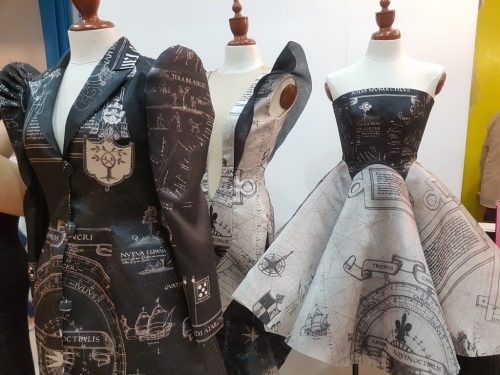
As with most industries, today’s textile printing industry is undergoing massive changes thanks to advancements in digital technology. What do you need to know about digital printing?
Digital textile printing offers massive benefits when it comes to cost, creativity, efficiency and simplicity. For those still working with traditional screen printing is the move to digital the right one for your business? How do you go about finding the right printer?
According to Epson Singapore’s Senior Presales Engineer, Jeffrey Soh, initial investment in the right printer allows your business to enjoy the benefits of the digital revolution while also leaving you agile enough to embrace further advancements. This idea is evident with Epson’s SureColor F-Series.
“The philosophy behind the F-Series is that when you buy this printer, it is a one-time investment that can be upgraded in the future,” says Jeffrey.
Epson ensures this because they’ve designed every key component of the F-Series printers. The print head, printing software and ink are unique to Epson and work seamlessly to create bright colours that can be applied to any fabric.
“The technology is owned by us – we produce it and understand it,” says Jeffrey. “There are three core components in this printer. First is the print head that is designed and built by us. Second is the technology for the firing of the printer – the software we use to place the ink on the surface. Third is the ink formulation and its manufacturing.
“Many of our competitors rely on technology from second parties, but Epson printers are built from the ground up using original core technologies. This enables Epson to agilely reflect customer needs directly into its products, as we seek to achieve our goal of constantly creating products that exceed customer expectations.”
A simple and adaptable printing process
Responsible for conducting printer demonstrations for customers Jeffrey knows the benefits that digital printing offers businesses, especially when compared to traditional methods. The digital process is very simple. Once you have your graphic design, it’s a matter of inputting the image into the machine, printing on the transfer paper, and pressing a button to transfer the prints to textile. You can improve or alter the design at anytime during this process.
“The thing about digital printing is that it is customisable; you can change the design anytime you want,” explains Jeffrey. “You can do small runs, maybe two to ten pieces of the same design, or even one piece of a design. Traditional screen printing is less flexible. You cannot make changes once you start the process of doing the film, the colour separation and all those things. You need to do a minimum of about 2,000 pieces, or you’re going to waste a lot of effort and money.”
Increased creativity
Essentially what this does is put more scope for creativity in the hands of the designer. With the standard textile printing method, realising a designer’s full vision was always difficult, and in a lot of cases, just not possible. The details and colours offered by digital textile printing makes almost any design achievable.
“A lot of designers visualise and put a lot of work into their design, but it’s very difficult to achieve their exact expectations with traditional screen printing. With digital printing, what they envision becomes real. They can translate whatever imaginations they have into real work,” says Jeffrey.
For those in the business of printing on textiles, digital printing allows them to offer customers a unique service – small runs. Designers aren’t locked into 2,000 or more pieces at a time, and it’s now affordable for printing professionals to offer smaller one-off runs.
“Smaller fashion designers do not want to produce large runs for most of their designs; in most cases they want to do limited pieces of the same design. They cannot do this with traditional screen printing. But digital printing gives them that option,” says Jeffrey.
Regardless of the size of the run you’re after, the SureColor F-Series is the right digital printer for your business needs.
“Big or small run, it doesn’t matter. The F-series can be used by a one-man company or a single designer who just wants to process everything themselves. It can also be used by big factories who produce thousands of garments a day.”

